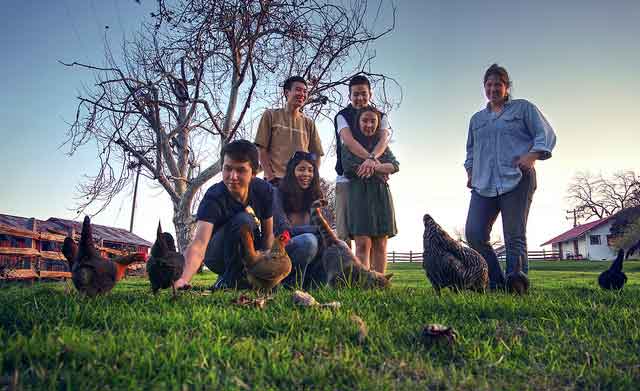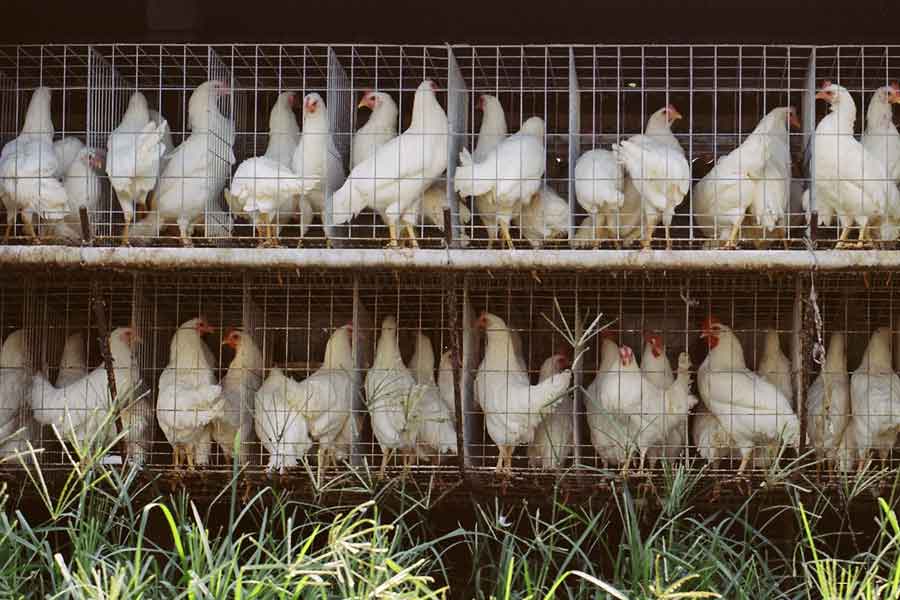How many chickens per coop is an important question when looking after the health of your flock. The answer depends on a number of factors.
What Kind of Chickens You Have
Some species of chickens do well in small spaces:
- Bantams are small birds who lay small but delicious eggs, and require less space than other breeds of chickens
- Silkie Bantams are quiet, gentle, and flightless, making them good for smaller coops and urban areas.
- Australorps are friendly, prolific egg-layers who don’t require much space
- Orpingtons are docile, sociable, good egg-layers who adapt well to smaller environments
At the other end of the spectrum, larger birds generally require more space:
- Barnevelders are versatile birds, good for egg laying, meat production. They also do well as show birds since they are calm and easy to handle
- The Brahma is one of the biggest breeds in the world. It’s a good egg layer and meat producing chicken, while being easy to manage
- Orpingtons are big birds who are easy to handle and lay 200 eggs a year
- Plymouth Rocks are popular breed for egg laying, meat production, and are famously non-aggressive
And some chicken species are simply more aggressive, either when crowded, or when mixed with other species:
- Old English Game chickens were long bred for fighting and are now prized as ornamentals. Hens are good layers, but the species doesn’t tolerate confinement well
- Asil chickens were long bred for fighting, and these gorgeous birds will fight from a very young age. They need lots of space to keep their distance from each other
- Malay chickens are large, energetic birds with an unusual upright posture. This species requires lots of exercise to stay healthy and require lots of space in order to get it, due to their large size and long legs
When considering starting a new flock, or mixing a new breed into your existing flock, research the breed. Make sure you have enough space for them, and that they are likely to get along with your existing chickens.
How Large is the Inside of Your Coop?
For large birds, you should expect to give them about 4 square feet of space per bird in a coop where they are allowed outside, and about 10 square feet of space per bird if they will be enclosed at all times. Small breeds like bantams need about half that amount of space.
Three hens can comfortably share a 1 square foot nesting box or nesting space, but more laying hens will require more space for nesting.
How Much Outside Area do Your Chickens Have?
Generally speaking, the more freedom your chickens have to roam, forage, and exercise outside during the day, the less space they need inside the coop at night. Within certain limits, you can get away with having a smaller coop if you have a large run or let them range outdoors during the day, and you have a mild climate where they can be comfortable outside for most of the year.
If you plan on free ranging your chickens, you will need about 200 feet of pasture per bird, or they will strip the soil down to bare dirt. And even free-range chickens will need to be kept inside a coop at night.
What are your Local Regulations?
Many cities have regulations and restrictions regarding keeping chickens, and they can include how many chickens you can have in a flock, and how much space to allow them.
It is a good idea to check your local regulations in any case. Your city or county may have rules and restrictions on:
- How many chickens you can own in total
- The presence of roosters
- The size and safety of a coop related to animal welfare
- The size and structure of a coop related to building permits
- The placement of a coop relative to dwellings, sidewalks, or other structures
- A city may also require licensing, fees, or proof of liability insurance for keeping of chickens.
What is a Good Number of Chickens to Have?
You may also be wondering what a good number of chickens is to have for a healthy flock. At a minimum, you should have 3 chickens, because they are social birds and require other chickens to be happy and healthy.
If you are raising chickens in order to eat the eggs, a good target number is three chickens per two members of your household. Laying hens in their prime produce about an egg every day, so having three chickens for two family members would allow everyone to have an egg every day, with a little room for error. But chickens produce fewer eggs as they age, and it can be a tough decision about what to do with older hens who are not laying any more, but still taking up space in your coop and consuming chicken feed.

If you are raising chickens in order to breed them, you will need a rooster (again, check your local ordinances to see if roosters are permitted). One rooster will breed 2-10 hens, but experienced breeders advocate keeping a “spare” rooster, and a second rooster is also good for genetic diversity in your flock.
If you are raising chickens as pets and as a hobby, then it’s probably best to start with a flock of 3 and a coop that could potentially hold 4-5. As you learn more about keeping chickens, you may discover different coop features that are important to you or need to be altered in order to work better, or you may discover that chickens aren’t a good pet for your family. But having a little bit of extra space keeps your chickens happy, and also gives you room to bring home a new irresistibly cute chick every couple of years.
In Summary
There is no definite answer as to how many chickens you can keep in a coop. It depends on how large your coop is, what kind of chickens you have, how much outdoor space they have access to all year long, what your local regulations are, and what your goals are in keeping a flock. Keep in mind that chickens do require adequate space to be happy and healthy, so it’s important to avoid overcrowding them.

